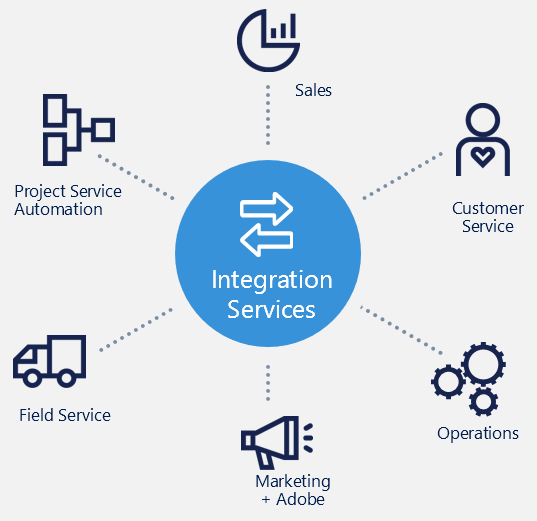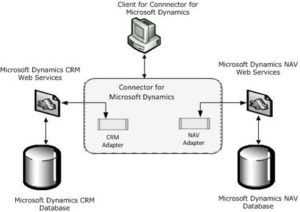
Dynamic DSM was designed from the outset with deep integration in mind. Built on the framework of Microsoft Dynamics CRM, our DSM tracking system leverages the built-in integration options of SSIS and the Connector for Microsoft Dynamics. For integrations where these options are not applicable, the leading 3rd-Party Integration Application, Scribe, is implemented. Numerous implementations have been successfully performed using Scribe as the integration platform. Because of these successes, a large number of configurations can be applied to future implementations of Dynamic DSM.
Integration via SSIS (SQL Integration Services)
Dynamic DSM is able to easily take advantage of the options provided by SSIS. SSIS is a platform for building data integration solutions and it is a service that runs on the SQL Server. SSIS replaces the existing Data Transformation Services (DTS), which was introduced to the market as a component of SQL Server 7.0, and runs a unique package which stores the design of an ETL (Extraction -> Transformation -> Load) process. In order to utilize SSIS properly, an SDK tool must also be implemented. Examples include KingsWay and CozyRoc. These tools bring the data into the tables via the SDK rather than by simply updating the SQL tables. In this way, the following functionality can be realized via configuration:
- Handling of Missing Identifiers. If the Primary Contact is being updated in an Account record and the Identifier for the Primary Contact is wrong, the rest of the Account record will still be updated if this parameter is set to True.
- Detection of Duplicates.
- Batch Size Management.
- Matching on Multiple Records.
- Ignore Unchanged and Non-matching Fields.
- Handling of Errors.
- Handling of the Unique ID on imported, updated, and deleted records.
Scribe – by ScribeSoft
Dynamic DSM leverages the #1 data integration & migration tool, SCRIBE. Scribe has been building connectivity to Microsoft technologies such as SQL Server®, Azure™, Office®, & Microsoft Dynamics® for a number of years. Scribe’s connector portfolio includes connectors for Microsoft Dynamics, SQL Server, Azure, Office, & SharePoint®. Other useful features include the following:
- Choice of Online or On-Premise
- Broad portfolio of Connectors.
- Real-Time vs One-Time
- Open Connectivity
- Template Model
- Data processing workflow
- Source queries/filters
- Field Transformation
- Duplicate detection
- Secure Data
Data Synchronization & Integration with External Systems
Dynamic DSM is able to synchronize data with numerous other systems:
- SAP. Typical SAP integration tables include the following:
- Business Partner
- Contract Account
- Contract
- Installation
- Premise
- Connection Object
- Various ERP platforms
- Various CRM platforms
- Microsoft Access
- Microsoft Excel
- CSV Format
Dynamic DSM is thus able to synchronize data with the following systems. 
Scheduled Batch Updates from External Systems
Dynamic DSM is able to easily perform daily updates from external systems. Typical synchronization methodology is to (a) regularly update predetermined fields and then (b) allow the user to choose if this data is “better” than the existing data in the system.
- Nightly batch update (from SAP, for example).
- This data updates the “SAP” fields in the system.
- The user sees both the system fields AND the “SAP” fields.
- The user is able to easily see which fields are different (because the system flags the differences via field color).
- The user has the option to hit the button “Update from Source”.
- This will then overwrite the system data.
Our DSM tracking software provides the ability for users to integrate with SharePoint. Recently, Microsoft greatly simplified the integration between CRM Online and SharePoint Online, which is managed within Microsoft Dynamics CRM Online. Customers of Dynamics CRM Online and SharePoint Online will no longer need to install and configure the CRM List Component to enable the Document Management integration. An Alert is shown in CRM notifying CRM Administrators when Server-based SharePoint Integration is not enabled (similar to Outlook Client install notification).

